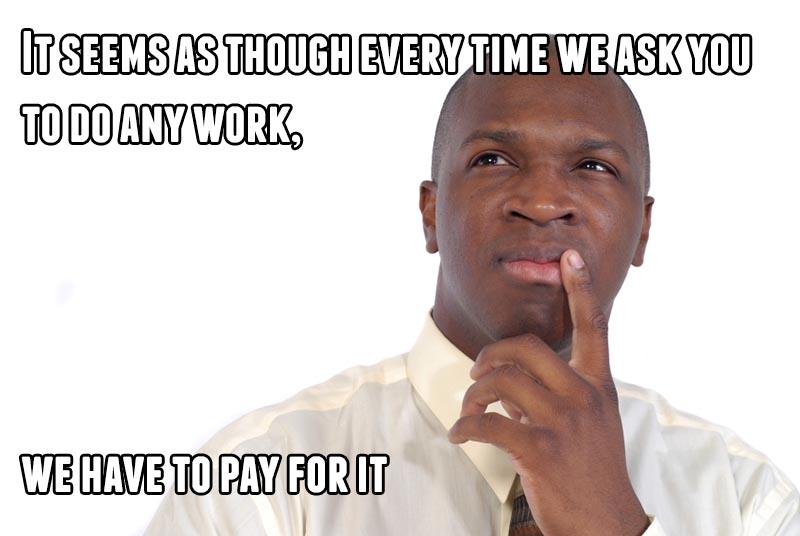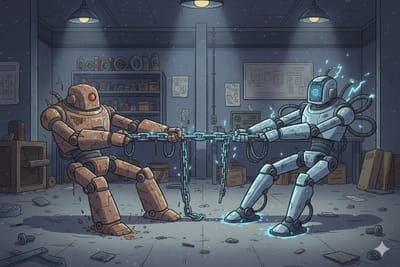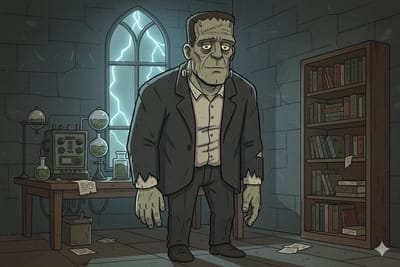Why I Quit the Web-Design Business


Image credit: Clients from Hell
By the end of 2008, I had reached a professional crossroads. After nearly a decade as an enterprise system consultant, I was on the verge of leaving the field. Blame a quickly eroding economy and my unwillingness to spend four days per week in hotel rooms for nine months at a time. Beyond that, I wanted to try my hand at a few other things: full-time writing and web design were near the top of my list. It was time for me to shake things up and embrace uncertainty. I've said many times that we have to get comfortable with being uncomfortable.
In any economy, the shift from one career to another is rarely smooth. Ditto for me. I didn't become a full-time writer and speaker overnight. From 2009 to 2010, I carefully took a limited number of consulting gigs. Sure, I was playing the long game, but I didn't despise near-constant travel and internal politics enough to quit cold turkey and live off of pasta and tuna.
I started blogging and embracing social media in the years that followed. As such, I became pretty adept at WordPress. In fact, I was able develop sites of reasonable complexity while farming out really involved PHP, CSS, and JavaScript coding to my primary web developer. Why not make some money in the process? In my own parlance, I decided to add that plank to my platform.
From 2011 to 2012, I signed up a grand total of six clients, all of whom agreed that WordPress was the way to go. (I wouldn't have worked with them otherwise.) All six owned small businesses. No shocker here: they were extremely budget-conscious.
By the end of 2012, though, I decided that the juice wasn't worth the squeeze. To the extent possible, I finished up my existing projects and stopped pursuing new ones. In a few cases, I agreed to part ways with my clients before their sites went live. Two were just as unreasonable, demanding, and recalcitrant as clients that inspired my first book, Why New Systems Fail. (In speaking to other more experienced web developers, at least I could take comfort in the fact that I had plenty of company here.)
So why did I get out?
Difficulty Managing Expectations
For many small business owners, the very thought of paying for a website is anathema. After all, aren't free sites available web.com, BannerView, and other services?
High-volume factories and chop shops can quickly produce generic, low-cost websites, but quality suffers. When done right, the development process takes serious time. No one can gather requirements, develop wireframes, train clients, and make tweaks for $500. Charging $3,000 (more or less) often left my clients with unrealistic expectations. That was more than they ever spent on a website and, in their eyes, that meant that they were entitled to get whatever they wanted whenever they wanted, no questions asked.
Scheduling Complexities/Respect for My Time

I know all too well the challenges associated with running a small business. I run two of them. You wake up thinking that you will create a marketing plan. By 10 a.m., you're knee-deep into a thorny IT issue. The fleas come with the dog, and the ability to stick to plans can be tricky. As Dwight D. Eisenhower once famously said, "Plans are nothing; planning is everything."
Still, it's entirely unreasonable to expect your developer—in this case, me—to routinely drop whatever he's doing because you now have ten minutes to spare. Working in a disjointed fashion only prolongs projects, increases costs, and engenders enmity.
Unwillingness of Clients Pay for Ongoing Support
Make no mistake: a static website is very different than a content management system. The latter requires regular maintenance, updates, never mind, you know, content; it's not a set-it-or-forget-it proposition.
Despite my initial conversations with clients (and related contract language), I just couldn't seem to effectively get that point across. In a few cases, my work was never "finished" and never would be. Unless I was being paid for ongoing support, I wasn't going to fix issues and make enhancements indefinitely. That's just not how I roll.
Unwillingness of Clients to Fish for Themselves
How do I embed a YouTube video in WordPress? It's a fair question, but hardly an uncommon one. WordPress runs more than 74 million sites on the Web. As such, it's extremely unlikely that many others have not asked your question before. Lamentably, most of my clients didn't grasp this. They were unwilling to do a simple Google search and watch a three-minute video on the subject.
Inability of Clients to Make Decisions and Stick With Them
Making major website changes is not as simple as editing a Microsoft Word document.
In one case, a proposed three-month project had extended to nearly a year. Months would go by without any contact from my client. My calls and e-mails went unreturned. Despite these challenges, I had finally taken her company to the five-yard line. As we were ready to launch, she told me that she no longer liked our agreed-upon design and wanted to effectively start from scratch. When I demurred, things got nasty and she promptly slammed me in several e-mails, as well as a completely inappropriate Amazon review for which she justifiably took a great deal of slack.
Game over.
Inability of Clients to Articulate What They Wanted
Ask an architect to build you a house and he or she will answer with more questions:
- What kind of house?
- How many floors?
- How many bathrooms?

The same holds true with website design. Specificity is crucial; even tweaks to font sizes can significantly affect spacing.
With the right budget, you can pretty much build anything and make changes as frequently as you like. No client, of course, can throw unlimited funds at any project, much less a smallbiz website.
Clients Often Didn't Know What They Didn't Know With Web Design
Tensions arise when website neophytes innocuously ask for changes that, while simple to them, actually cause a great deal of rework. Yes, WordPress is very intuitive and powerful, but many of my clients believed that making structural changes was tantamount to editing a Microsoft Word document. This caused a great deal of friction in several cases.
Only one of my clients, a landscaper, consistently trusted my advice and understood that I was building a site that he would ultimately maintain. Perhaps not coincidentally, he lived near me and we would work on his site in person. Maybe there's something to in-person communication after all?
Simon Says: The Output-Input Ratio Just Didn't Make Sense
Although I only developed sites for others for two years, learned a great deal about client relations and the ugly site of the business. Ultimately, I decided to get out while I still had my sanity.
For more doozies and downright horror stories, check out Clients From Hell.







Member discussion